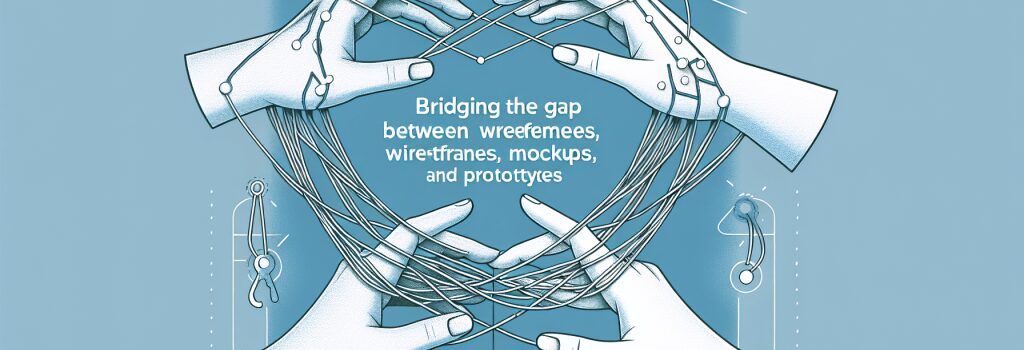Bridging the Gap Between Wireframes, Mockups, and Prototypes

Bridging the Gap Between Wireframes, Mockups, and Prototypes in Web Development
In the journey of transforming your web development concepts into tangible, functional websites, three key stages play a crucial role: wireframing, creating mockups, and developing prototypes. Each serves a unique purpose and collectively, they bridge the conceptualization of UI/UX design to the actual website. Understanding the distinctions and connections between them is essential for any aspiring web developer.
Understanding Wireframes
Wireframes are the skeletal framework of a website. They are primarily focused on structure and layout, devoid of design elements like colors or images. Wireframes lay the foundation by outlining where elements like headers, navigation bars, and content blocks will be placed. They are quick to create and modify, making them an ideal starting point to align the team’s vision.
Transitioning to Mockups
Once wireframes are approved, the next phase involves developing mockups. Mockups enhance wireframes with visual details, including color schemes, typography, and images. They provide a more realistic view of what the final product will look like but are still static designs. Mockups are invaluable for stakeholders to visualize the end product and make design decisions before any coding begins.
From Mockups to Prototypes
Prototypes are the closest representation of the final product in the web development process. They are interactive simulations that allow users to experience functionality, transitions, and how interacting with the website feels. Prototyping is a crucial step for identifying usability issues and refining UI/UX aspects before moving into the development phase.
The Iterative Process
Embracing Iteration for Perfection
The transition from wireframes to prototypes is not always linear. It involves an iterative process of revising and refining at each stage based on feedback and testing. This iterative approach ensures the final website is both aesthetically pleasing and functionally robust.
Collaboration Across Stages
Effective communication and collaboration among the design and development teams are critical throughout these stages. Tools and platforms that support wireframing, mockups, and prototyping can facilitate these collaborative efforts, ensuring that the project remains on track and aligned with the original vision.
Conclusion
Wireframes, mockups, and prototypes are more than just steps in the web development process; they are the bridge that connects an idea to its realization. By understanding and effectively employing these tools, aspiring web developers can ensure their projects are well-designed, user-friendly, and meet the project’s goals. The ability to navigate these stages with confidence is a cornerstone skill for any web developer aiming to bring their vision to life in the digital space.


